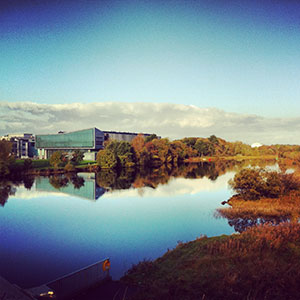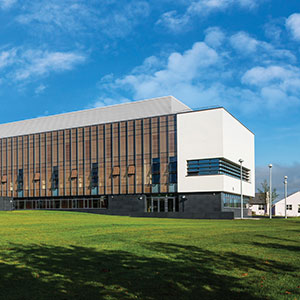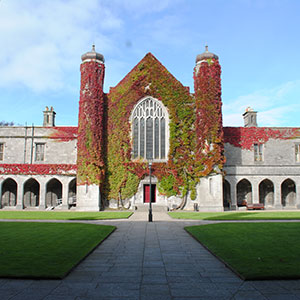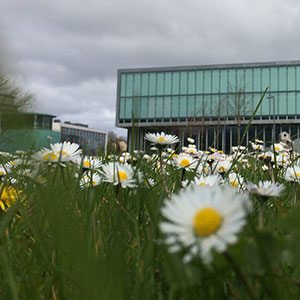-
Courses

Courses
Choosing a course is one of the most important decisions you'll ever make! View our courses and see what our students and lecturers have to say about the courses you are interested in at the links below.
-
University Life

University Life
Each year more than 4,000 choose University of Galway as their University of choice. Find out what life at University of Galway is all about here.
-
About University of Galway

About University of Galway
Since 1845, University of Galway has been sharing the highest quality teaching and research with Ireland and the world. Find out what makes our University so special – from our distinguished history to the latest news and campus developments.
-
Colleges & Schools

Colleges & Schools
University of Galway has earned international recognition as a research-led university with a commitment to top quality teaching across a range of key areas of expertise.
-
Research & Innovation

Research & Innovation
University of Galway’s vibrant research community take on some of the most pressing challenges of our times.
-
Business & Industry

Guiding Breakthrough Research at University of Galway
We explore and facilitate commercial opportunities for the research community at University of Galway, as well as facilitating industry partnership.
-
Alumni & Friends

Alumni & Friends
There are 128,000 University of Galway alumni worldwide. Stay connected to your alumni community! Join our social networks and update your details online.
-
Community Engagement

Community Engagement
At University of Galway, we believe that the best learning takes place when you apply what you learn in a real world context. That's why many of our courses include work placements or community projects.
February New study reveals high rates of antimicrobial resistant bacteria in swans
New study reveals high rates of antimicrobial resistant bacteria in swans
A study led by University of Galway has revealed that swans in the Greater Dublin and Co Kildare area frequently carry antimicrobial resistant (AMR) bacteria in their guts that are very similar to those that cause difficult-to-treat infections in humans.
The findings, from the research project titled WILD-AMR, indicate that swans living in urban waterways can act as a reservoir for pathogenic, multidrug-resistant bacteria, including some that are resistant to last-resort antibiotics.
AMR is one of the most pressing global health challenges as it affects human and animal health, agriculture, food systems, and the environment.
Working with the Irish Midland Ringing Group, faecal samples from 17 swans living in several locations around the Greater Dublin Area, including Broadmeadow Estuary in Swords, Bray harbour, Newbridge, Co Kildare, and along the Grand Canal in Dublin city were collected for analysis. Of the 17 samples, 11 were positive for one or more AMR bacteria, with 35 AMR bacteria detected overall. The most common type of AMR bacteria detected were multidrug-resistant E. coli that produced enzymes capable of breaking down beta-lactam antibiotics (ESBL-E. coli).
The WILD-AMR project adopted a One Health approach to tracking the spread of AMR pathogens, investigating the links between human, animal and environmental health.
The research team explored whether wild animals living and feeding in human impacted habitats were potential vectors of AMR.
Key findings include:
- A high prevalence of AMR was detected in swans, with 65% positive for one or more AMR “superbug”
- Resistance to last-resort antimicrobials: The team detected strains of E. coli resistant to the last-resort antibiotics carbapenems and colistin, which are reserved for use when the first and second-line antimicrobials fail to clear the infection
- “High-risk clones”: whole genome sequencing revealed that over half of the multidrug-resistant E. coli carried by swans belonged to “high-risk clones”; closely related pathogenic E. coli that are very good at causing urinary tract and blood stream infections in humans.
Lead researcher of the study Aneta Kovarova, Senior Technical Officer in the School of Medicine at University of Galway, said: “We detected the same pathogenic AMR E. coli in multiple swans, both from those living in the same location and those living in different locations. It is likely that the high rate of detection of these AMR bacteria in swans is linked to human-associated pollution of their shared water habitat with treated and untreated wastewaters and through storm water overflows. However direct spread from swan to swan cannot be ruled out.”
Principal Investigator Dr Liam Burke, Lecturer in Bacteriology in the School of Medicine at University of Galway, said: “Given their proximity to humans and their presence in many popular bathing and recreation locations, such as city parks, lakes, harbours and coastal areas, there is potential for ongoing spread of drug-resistant opportunistic pathogens in swan faeces. Overall, this research underscores the interconnectedness of environmental, animal and human health. Our findings suggest that swans may be an under-recognised vector of AMR bacteria.
“There is currently very little surveillance of AMR in wildlife. We propose that swans may represent a useful “sentinel” wildlife species for One Health monitoring of AMR, as they are already monitored by ringing in many countries.”
The study, published in the Science of the Total Environment, is available here.
The study was funded by the European Union’s Erasmus+ Programme, the Environmental Protection Agency, and the Health Service Executive.
Ends















